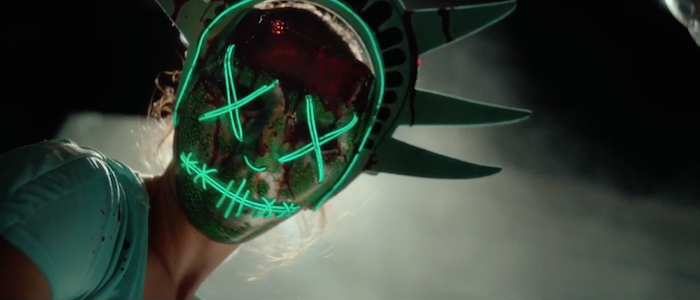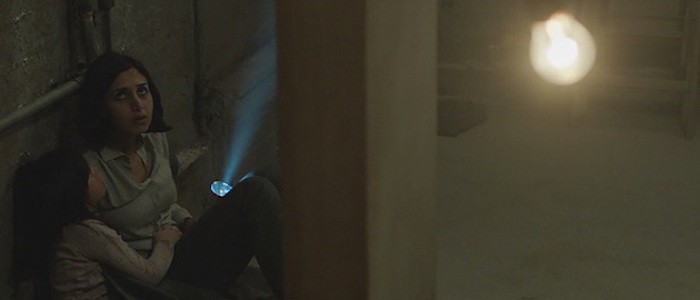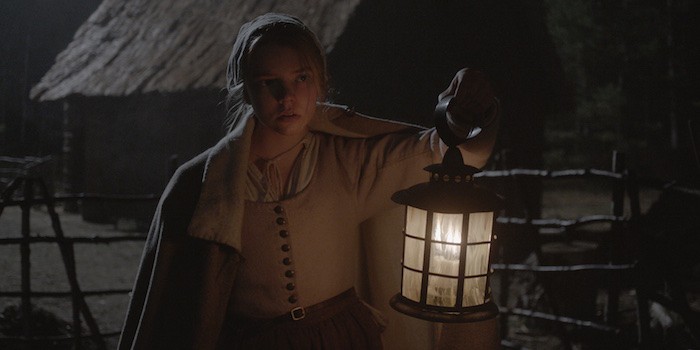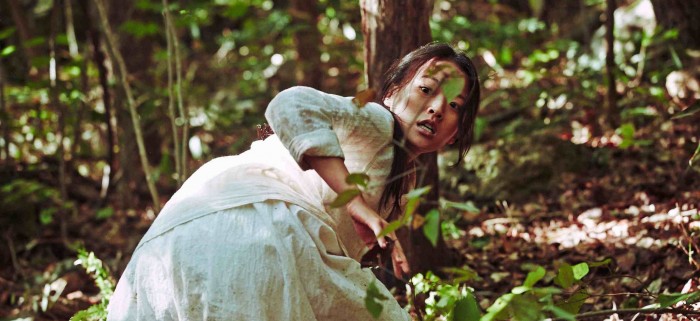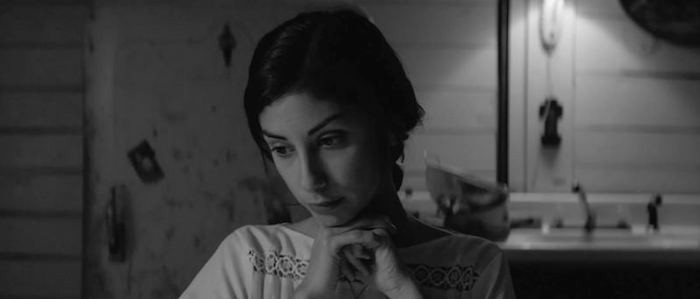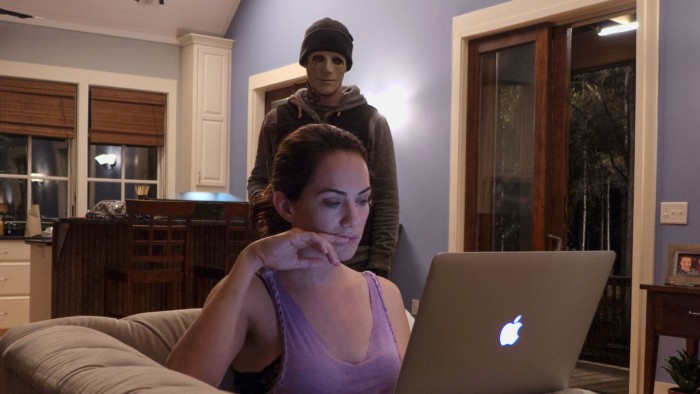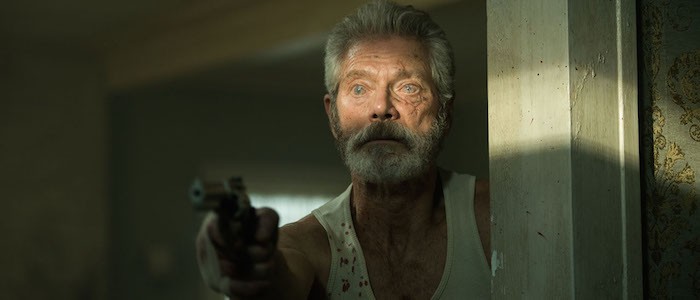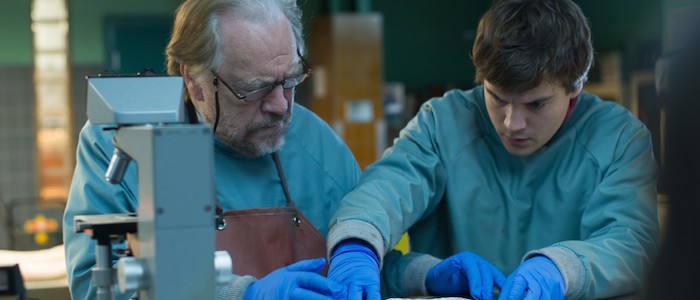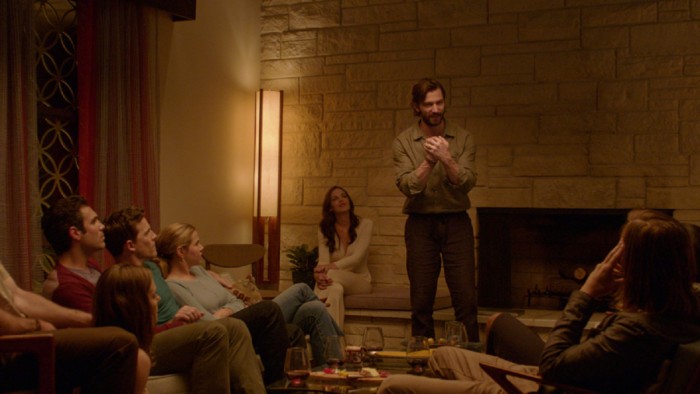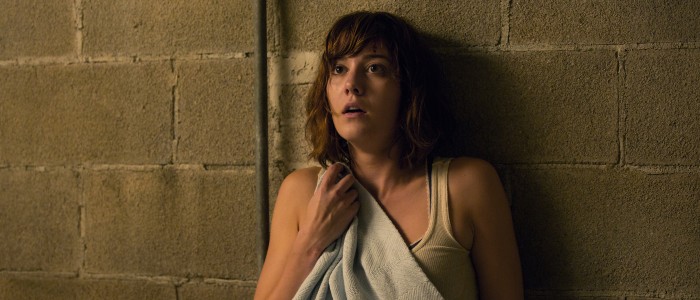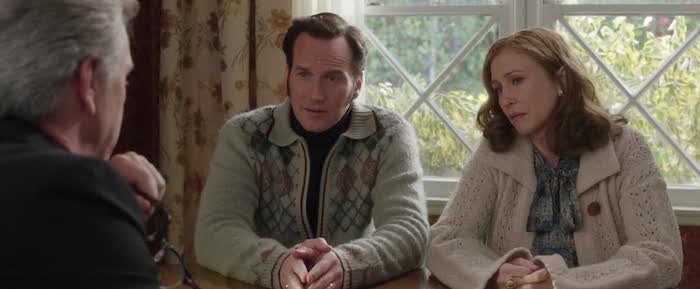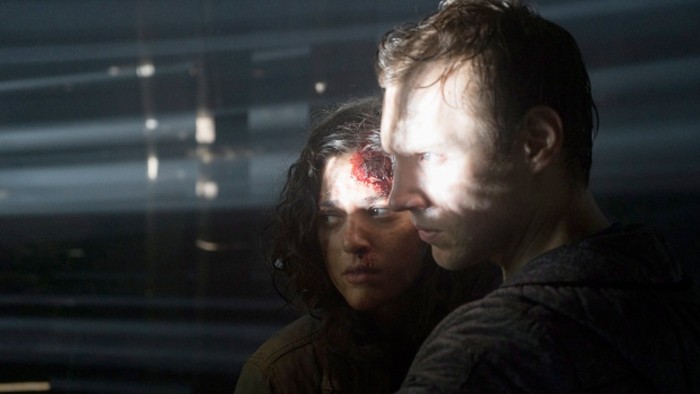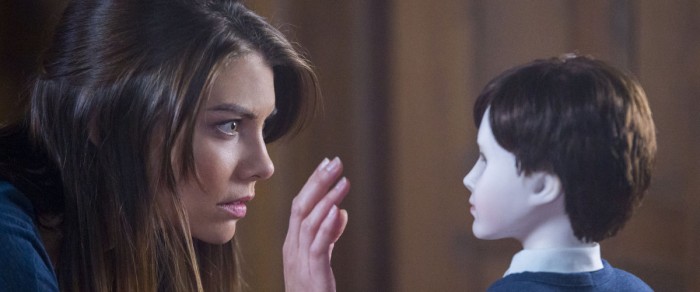2016 Was A Banner Year For Horror
If you grab an average person off the street and ask them how they feel about the recently departed 2016, they'd probably give you a detached thousand yard stare. Or burst into tears. It was, for the world as a whole, not a great time to be alive. However, it was a great year for horror movies. And that makes a twisted sort of sense. As we discover new ways to fear and despair, the movies will react accordingly. Whether by accident or design, horror cinema represented everything we dread in 2016. How it will react to the actual events of this past year has me fascinated...and terrified.
Looking back at the past twelve months, it's astonishing just how good horror cinema has been. It was there when we needed it, offering an avenue of escape and, when necessary, a dark mirror to examine our inner demons.
It's All Politics
While horror movies often get shuffled into the "escapist entertainment" corner, a way to escape the world and just let your inner animal hoot and holler at blood and guts for 90 minutes, there are few genres as ready, willing, and effective at actually reflecting our real-world fears and anxieties. When writer/director Jeremy Saulnier set out to make Green Room, he surely had no idea that his gruesome siege story would quickly transform into one of 2016's most apt and unsettling cinematic metaphors. In a year where white supremacy came out of the woodwork and landed a devastating blow against progressive America, here is a movie about a young, defiant punk rock band trapped in an isolate music venue's green room after witnessing a murder. With a small army of neo-Nazis literally at the door, defiant posturing matters no longer – staying alive does. Green Room is a tremendous film for a number of reasons and it's the most purely intense experience of last year, but the mere concept has taken on a new meaning – we're surrounded by Nazis and there's no easy way out.
While Green Room's politics emerged through eerie timing, The Purge: Election Year wears its views on its sleeve like a badge of honor. Director James DeMonaco's high-concept horror series, where a dystopian America legalizes crime for one night a year so citizens get their murder on, sounds like an excuse to just witness depravity and mayhem for a few hours, but the series has quickly shifted its focus. The subtext of the (mediocre) first film has become text in the (far better) sequels: the Purge is the authoritarian government's excuse to declare war on the lower class, as the privileged have the resources to survive the night while low-income families get wiped out. Of course, this bleeding heart message is surrounded by chainsaws and insane killer costumes and plenty of gore. The combination of preachy social politics and junk food horror shouldn't drive a hugely successful horror franchise, but here we are. Birth.Movies.Death. writer Jacob Knight dubbed this movie "wokesploitation" and there is no better way to describe it.
American horror filmmakers weren't the only ones getting political in 2016. Babak Anvari's Under the Shadow was rightfully compared to 2014's The Babadook for how it uses a truly terrifying monster tale to explore motherhood, but the setting ensures a very different experience. Set in post-Islamic revolution Tehran, Iran, the film follows a young mother (barred from resuming her studies at the university for her "leftist" political views) who finds her apartment under assault by a merciless djinn. With the city under constant attack by Iraqi artillery and the authorities completely uninterested in what a woman has to say, she must find a way to battle a supernatural entity in a society that offers her zero support. While this could be heavy-handed, Anvari offers the perfect blend of politics and jump scares. Each "boo" moment is only a reminder of how unvalued, and unsafe, our characters truly are.
Discomfort in the Arthouse
The Witch was the best horror movie released in 2016 it's bound to infuriate as many viewers as it wins over. Robert Eggers' directorial debut refuses to hold your hand. Its 17th-century Puritan characters speak with thick accents and utilize often inscrutable language, no easy answers are offered, and it refuses to present this family's conflict with the witch in the nearby woods as a straightforward battle between good and evil. While Christianity is often portrayed as the ultimate weapon against the forces of darkness in horror movies, Eggers presents this family's faith as a hypocritical liability that distracts them from the true threat at hand. Is young Thomasin better off seduced by Lucifer himself ("Wouldst thou like to live deliciously?") than she would be living with a family whose views debase her on a daily basis? It's an uncomfortable query, but The Witch revels in discomfort, slowly dipping the viewer into a pool of unpleasantness. Before you know it, you're submerged and you have no idea how things got this far.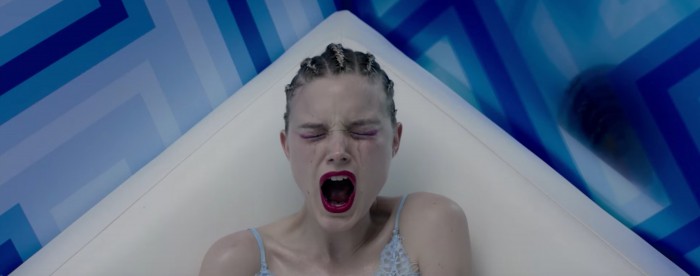
Speaking of inscrutable, Nicolas Winding Refn's The Neon Demon is a perfect example of a director making a movie purely for himself – if other people happen to like it, hey, that's okay. It's the kind of film that would make ordinary audiences riot and that's half of the appeal. Refn leans heavily on nightmare logic to sell a cavalcade of ideas connected through imagery rather than plot: the male gaze, the nature of celebrity, and the female pursuit of physical perfection are all picked apart, their bloody entrails left lying on the floor. Refn walks the fine line between fine art and trash, looking to infuriate and frustrate, titillate and disgust, enrapture and hypnotize. The Neon Demon isn't a movie you watch so much as experience. Whether this particular brand of glossy acid bath is for you is a question only you can answer.
However, the inscrutability of The Witch and The Neon Demon have nothing on Na Hong-jin's The Wailing. It has everything you'd expect from a South Korean horror movie: it's long, it's violent, and it rejects the commonly accepted reality to build its own little pocket nightmare, thank you very much. The sick beauty of the whole thing is that it starts off with a pretty accessible mystery: a strange plague has hit a small community, turning the afflicted into murderers. And then, over the course of an increasingly surreal 156 minutes, the film goes off the rails in the best way possible. By the fifth or sixth game-changing twist, you look down and realize that this train is flying over the ravine and won't land safely and that nothing will be answered or wrapped up. It's all going to end in flames and confusion and terror...but what confusion and terror, because The Wailing is an unnerving puzzle box worth exploring. It ends up speaking a language you cannot understand, but the words creep under your skin and linger.
In contrast to these other movies, The Eyes of My Mother is a fairly straightforward experience: disturbed young girl grows up to be disturbed young woman; disturbed young woman searches for self-esteem and happiness in murder. Shot in stark black and white, Nicolas Pesce has crafted a demented gem. Call it sympathy for Leatherface – a bracingly intimate, often tragic examination of a character who would be a cartoonish, backwoods psychopath in any other horror movie. We spend nearly every moment of The Eyes of My Mother with the shy/murderous Francisca and while the film never offers excuses for her loathsome behavior (this is a deeply unpleasant movie), it allows us to see this monster as a human being with recognizable urges and emotions. It's disquieting. It's fresh. It's not something you forget easily.
Hear No Evil, See No Evil
2016 offered an accidental and unlikely double feature in the form of Hush and Don't Breathe, two completely unconnected movies with concepts that act as mirror reflections one another. In one corner, you have Mike Flanagan's Hush, a home invasion movie about a woman terrorized in her isolated country home by a masked killer. It's a concept that we've seen a couple dozen times before, but with a twist: the victim here is deaf, which puts her at an immediate disadvantage against a sociopath who seems to be having the time of his life stalking a victim who can't hear him. While Hush is a very effective slasher movie when it has its heroine on the run, it becomes something really special when she is able to turn her weakness into a strength and use her disability as her chief weapon against the man who wants to kill her. There's not a lot of meat on the bone, but this is a delicious snack, perfectly executed and best consumed late at night.
While Hush is about a deaf woman pursued by a home invader, Don't Breathe is about a blind man pursuing home invaders. Fede Alvarez's follow-up to his Evil Dead remake is a slick and nasty piece of business, having more in common with the brutal horror movies that have been coming out of Europe over the past decade-plus than your average Hollywood film. There's no fat on this lean, monstrous piece of work: three crooks break into a blind man's home, not counting on him being a former soldier with a dark secret to protect who knows his home better than they do. Things proceed to get really bad and Alvarez spares us nothing – every creak of a floorboard is as startling as a gunshot, every punch feels like a stab, and every stab might as well be breaking our own flesh. Don't Breathe is a punishing experience hellbent on leaving you battered and breathless. It succeeds.
Character and Claustrophobia
Some of the best horror movies know how to take their time, to simmer at a low heat for a long time before tossing you into a raging inferno. The real trick is how you make that simmering process sing. The Autopsy of Jane Doe sings this particular song as well as any other movie. André Øvredal's follow-up to Trollhunter takes place mostly in a single autopsy room, where a skilled coroner and his medical assistant son literally dig into the corpse of a young woman who died under mysterious circumstances. It takes a long time for them to discover the truth about this dead body and when they do, the film gets, to use the scientific expression, scary as shit. But up until that point, the movie works a different kind of magic. As the two leads, Brian Cox and Emile Hirsch are nothing short of wonderful, with their dynamic feeling as lived-in as any other pairing I saw in 2016. And most importantly, the movie never forgets that these two are wickedly intelligent men doing a job they're very good at. Before things go to hell, The Autopsy of Jane Doe is a thrilling look at the process and purpose of an autopsy, with two fascinating and charismatic figures acting as tour guides.
However, the slow burn of The Autopsy of Jane Doe is running the 50-meter dash when compare to the slow burn of The Invitation, Karyn Kusama's agonizing (in the best possible way!) exploration of social dynamics at a party gone...right? Wrong? You'll have to stick all the way to the final stretch to see where this movie goes and what it does with its slow, but never tedious, set-up. For the bulk of its running time, you're at a slightly awkward dinner party hosted by a woman who is seeing her friends (and ex-husband) for the first time in quite a while. Where she has been, and how she met her new husband, will be explored. The purpose of the get-together will be revealed. And whether there's something sinister going on or not is the question you'll be asking yourself in every scene as Kusama ratchets up the tension in even the most innocuous moment. And then it all culminates in one of the greatest closing shots you will ever see.
While both of those films limit their characters to a single, inescapable location, 10 Cloverfield Lane is the most claustrophobic of the bunch. Set almost entirely in an underground bunker built by (and lorded over) by John Goodman's Howard Stambler, Dan Trachtenberg's thriller spends the bulk of its running time slowly confirming every Worst Case Scenario. Yes, Mary Elizabeth Winstead's Michelle is trapped down here. Yes, the world outside really has ended (more or less). Yes, Howard is not a well man. Yes, there really are...well, the third act should be discovered yourself. For its first two-thirds, 10 Cloverfield Lane is a character-driven thriller that sets the thematic stage for the left-field final act, with Michelle rising to the occasion against an all-too-human monster. It's a disquieting crowd-pleaser of the highest magnitude.
Compared to most of 2016's horror movies, The Conjuring 2 is a blockbuster. Expensive and glossy and full of CGI-powered set pieces that cost more than entire movies, James Wan's sequel to his 2013 masterpiece (yeah, I'll use the m-word) is a very, very good haunted house movie that follows its director's modus operandi to the T: a few minutes of unbearable tension released by an effective jump scare that leaves you screaming and chuckling with appreciation. Rinse, repeat. Wan has gotten his formula down by now and it remains a pleasure to watch him operate in the genre that made his name.
However, The Conjuring 2's real power comes not from its scares or its creepy monsters (especially that "Cooked Man"), but from Vera Farmiga and Patrick Wilson's lead performances. In Ed and Lorraine Warren, Farmiga, Wilson, and Wan have created one of modern cinema's great married couples, two people who are very much in love even as they make a living fighting ghosts and demons. They're a stable force in a world gone awry, a husband and wife who actively work to improve their relationship, communicate, and find time to remind one another that they still care. Is there room this kind of sweet sentiment in a horror movie? You betcha. The best scene in The Conjuring 2 isn't one of the many scares – it's when Ed grabs a guitar, breaks out his Elvis impression, and makes it very clear that the lyrics to Elvis Presley's "Can't Help Falling in Love" apply to his dear Lorraine.
A Good Old Fashioned tale of Terror
Is it a little disappointing that Blair Witch isn't an experimental exercise in dread like the original The Blair Witch Project? Maybe. Perhaps. But at the same time, it was probably the right choice for director Adam Wingard to avoid trying to capture lightning in a bottle for a second time and just go for something completely different. Blair Witch wants to do its own thing and it does that thing very well: it's a roller coaster, a first-person thrill ride through a theme park haunted house that spares no expense. It's a white knuckle 89 minutes that commands you in the moment...even if it won't replicate the deep psychological grooves that the original movie left in your brain. But still, any horror movie that gets the adrenaline pumping is nothing to scoff at.
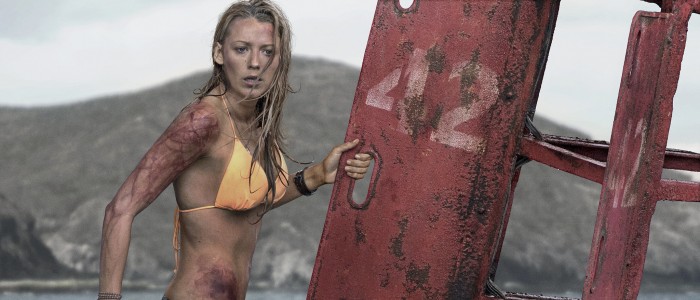 Jaume Collet-Serra also knows a thing or two about adrenaline and The Shallows is a hoot, a shark-sploitation tale of a surfer who finds herself stranded on a tiny rocky 300 meters from the beach while a hungry Carcharodon carcharias circles. The film's unenlightened view of sharks will surely (and honestly, rightfully) ruffle the feathers of more enlightened audiences, but that's a small price to pay to enjoy one of 2016's more outrageous and bombastic horror movies. Even when the film's reach exceeds its grasp/budget, the style and ambition on display here are delightful and its willingness to abuse the hell out of Blake Lively (who turns in a game and compelling performance) is as effective as it is shocking. It only took seven years, but Collet-Serra has finally made another movie as wacky and entertaining and absurd as Orphan.
Jaume Collet-Serra also knows a thing or two about adrenaline and The Shallows is a hoot, a shark-sploitation tale of a surfer who finds herself stranded on a tiny rocky 300 meters from the beach while a hungry Carcharodon carcharias circles. The film's unenlightened view of sharks will surely (and honestly, rightfully) ruffle the feathers of more enlightened audiences, but that's a small price to pay to enjoy one of 2016's more outrageous and bombastic horror movies. Even when the film's reach exceeds its grasp/budget, the style and ambition on display here are delightful and its willingness to abuse the hell out of Blake Lively (who turns in a game and compelling performance) is as effective as it is shocking. It only took seven years, but Collet-Serra has finally made another movie as wacky and entertaining and absurd as Orphan.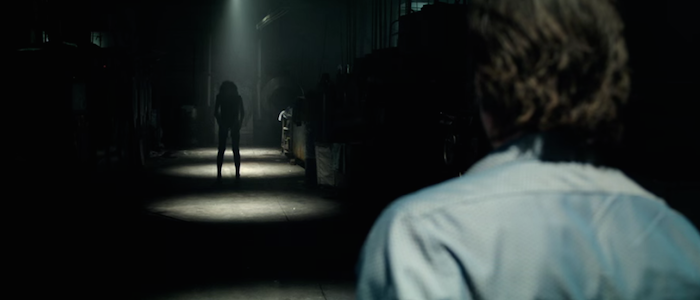
There isn't much nuance in Lights Out. It's attempt to use its central monster as a metaphor for mental illness feels half-baked at best and it becomes increasingly laughable every time the lead character stumbles across a literal mountain of exposition to explain what's going on. However, director David F. Sandberg's film (based on his own short) works where it counts: it's perfectly freaky. The central conceit, that the main characters must battle a creature that can only manifest in darkness and shadow, is an effective way to harness our inherent fear of the dark and the various ways the monster navigates patches of light is disconcerting and effective.
And that brings us to one of the most pleasant surprises of 2016. Despite that January release date, those abysmal trailers, and the fact that director William Brent Bell's The Devil Inside is one of the worst movies I've ever seen in my life, The Boy is a delight, an atmospheric, strange, and oddly compelling tale of an isolated mansion, a nanny, the possibly haunted doll she's been hired to watch. While the big twist is a carbon copy of a superior, non-Hollywood horror movie (whose identity would instantly spoil The Boy's surprises), it just plain works, damn it.

